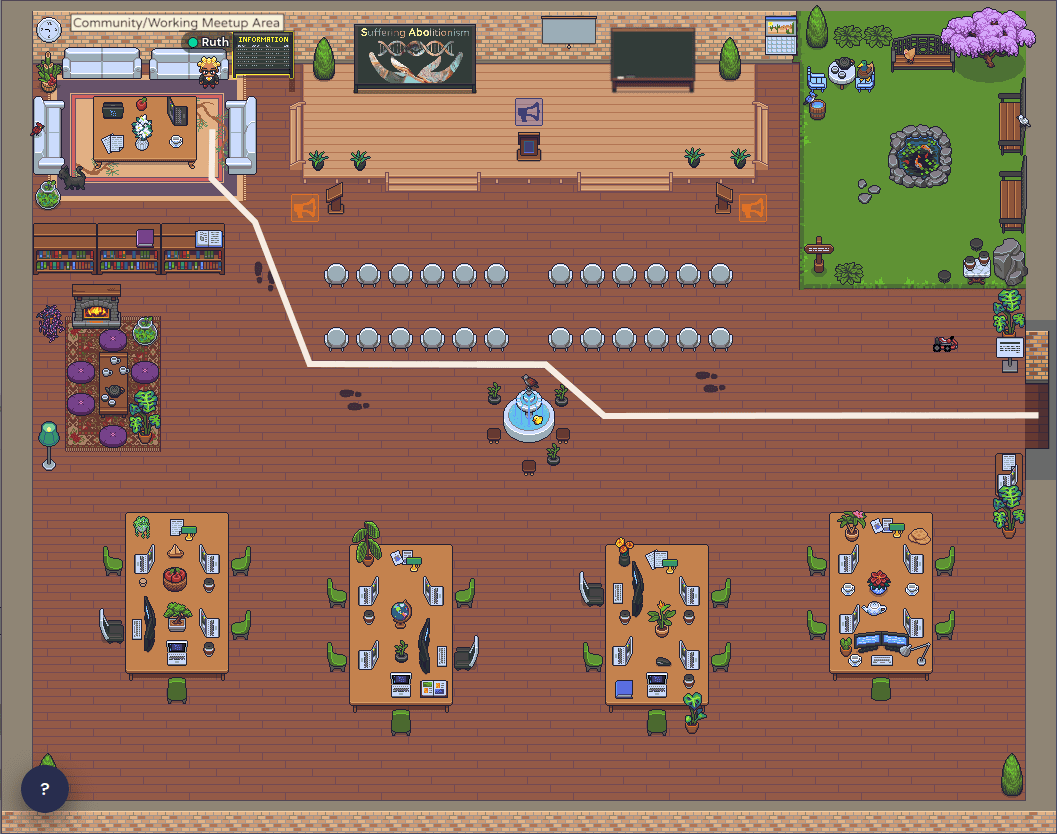Hi, and welcome to our global community of aspiring suffering abolitionists! :)
Our online meetups serve as a platform to grow a global community for motivating each other and collaborating on initiatives towards the abolition of suffering.
Please read the full meet up description to prepare beforehand and check out our website to dive into the topic of suffering abolition and find cause areas and initiatives to work on: https://suffering-abolition.github.io/.
To see the date converted to your time zone, you may use the following link. (It only works if your browser has access to your location.)
We will meet in our Suffering Abolitionist Hall (upper left corner) in EA Gather Town. See Hall map below. Simply click the link to enter.
Flexible structure of the working meetup:
1. The first 10 min people have time to navigate, get our support if needed and gather in the meetup area of the Suffering Abolition hall.
2. We continue with a moderated introduction round with pitches on what people have been working on, ~1 min/person.
3. Then we have a deep dive into 2-3 projects of participants.
4. In the end, we share takeaways ~1 min/person.
5. Afterwards, we transition into an open end (probably unmoderated).
Approximate time investment: 1.5 h
We encourage the following contributions during the meetups:
Desired focus of the event: ~50% on
1. Updates on participants’ personal suffering abolitionist projects
2. Insights of participant’s research - please always specify how the insights contribute to projects that event participants are actually working on.
Next ~35-40%:
3. Personal story sharing / connecting / fun / wellbeing
4. Discussing personal fit for individuals and potential contributions
Last ~10-15%:
5. Philosophical discussions/ discussions of current media representation and potential responses
6. Research unrelated to specific projects







Sorry, I was way, way off. Oh well. Please just check date converted to your time zone with that link: https://www.timeanddate.com/worldclock/fixedtime.html?msg=Online%20Working%20%2F%20Community%20Meetup%20for%20the%20Abolition%20of%20Suffering&iso=20240406T07&p1=1440&ah=1&am=30 (It only works if your browser has access to your location.)